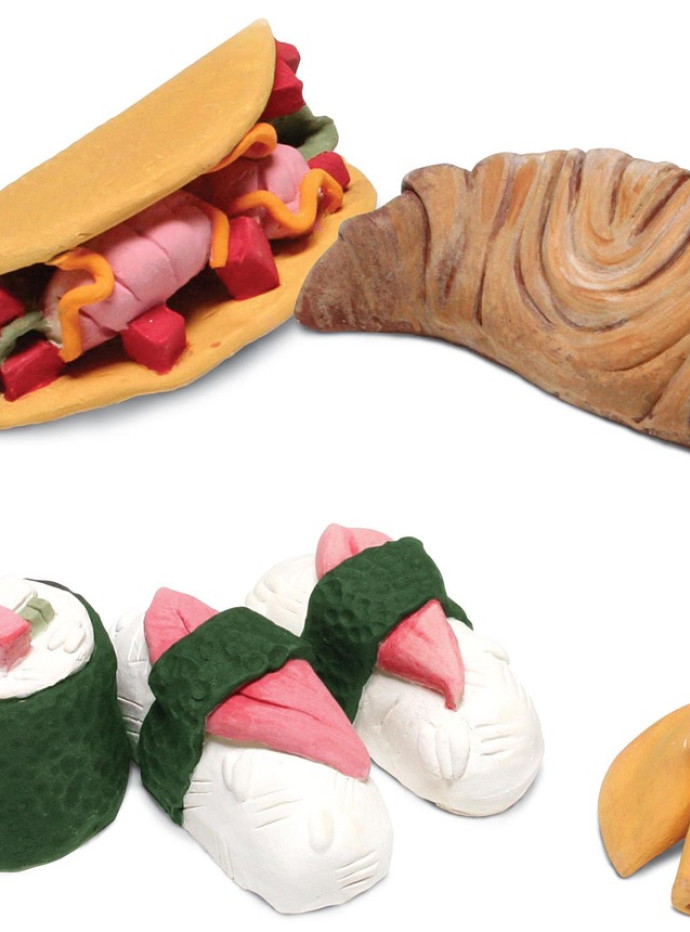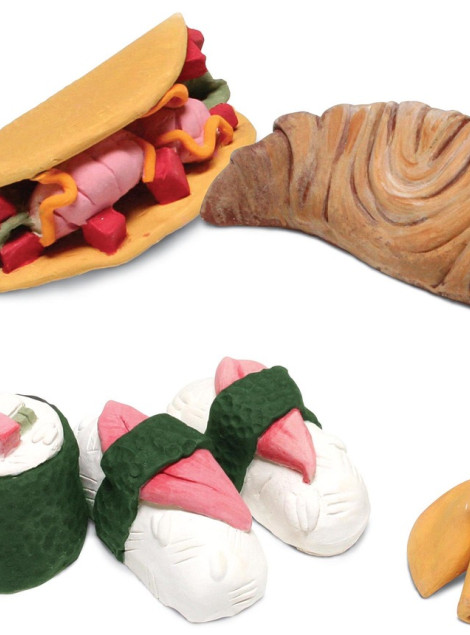Food For Thought

AMACO Lesson Plan #62-Food for Thought
Food traditions are an important part of growing up and learning about different cultures and families. Students can make a display of food traditions either from another culture or part of the world, or from their own lives. These Trompe L’oeil pieces will look good enough to eat!
Explore our Pinterest board for more examples of ceramic food.
Supplies List
- Velvet Underglazes
- Hardwood Rolling Pin
- Hardwood Thickness Strips
- Glaze Brushes
- Fettling Knife
- Teacher's Palette Low-Fire Glazes
- Potter's Needle Tool
- Versa Clay No.20 Moist
- Hardwood Modeling Tools

Background Preparation
Ask students about food traditions in their own family. Perhaps there is a special food that is eaten at holidays or family gatherings, or perhaps just a favorite weekly meal. Students might talk to family members about the origins or memories associated with a special food. Did family members come from a part of the world where that was a tradition? Is it associated with a special time of year or a specific holiday? Research might give more insight into the origins as well as the way it is made.
Alternately, students can research foods of a different part of the world, or a culture that is new or interesting to them. There are many books, both for children and adults, with lots of great recipes and photos of foods around the world.
Trompe L’oeil is a term for making an artwork that is so realistic that it “fools the eye”, encourage students to make something look as realistic as possible. Students should be encouraged to research Trompe L’oeil ceramic artists such as Betty Spindler, Victor Spinski, and Richard Shaw.
Gathering Supplies
You can find a list of supplies with this project.
Plan Project
Have students decide upon a food or meal they want to recreate in clay. Use photos or drawings as a source and plan.
Roll Slabs or Pinch Forms
Any method of clay forming can be used, but remind students that anything thicker than 3/4" should be hollow or punched with a needle tool to prevent blow-ups in the kiln.
Use Templates
Cookie cutters make great templates for tortillas.
Lettuce
Loosely fold and squeeze together thin slabs to resemble lettuce.
Texture
Use tools to recreate texture. Here a stylus makes small marks to resemble seeds of a cut tomato.
Coils
Small pieces can be made by rolling very small coils.
Taco!
Clay slip can be used to stick components together, or to mimic sauce.
Apply underglaze for color
Use a brush or sponge to apply velvet underglazes to unfired or bisque ware. Velvets can be layered for added visual depth.
Fire and enjoy your "food"
Fire the underglaze decorated pieces to an appropriate temperature for the clay body you are using. Invite students to talk about the food they have chosen and the food tradition it represents.
Alternate Glazing Method with Teachers Palette Glazes
This project can also be competed using the Teachers Palette Glazes. If you choose to use Teachers Palette Glazes, skip the Underglaze Step and bisque fire the uncolored pieces. After bisque, apply Teachers Palette Glazes, which can be blended to make custom colors, and layered to great effect. Glaze fire to Cone 05.
